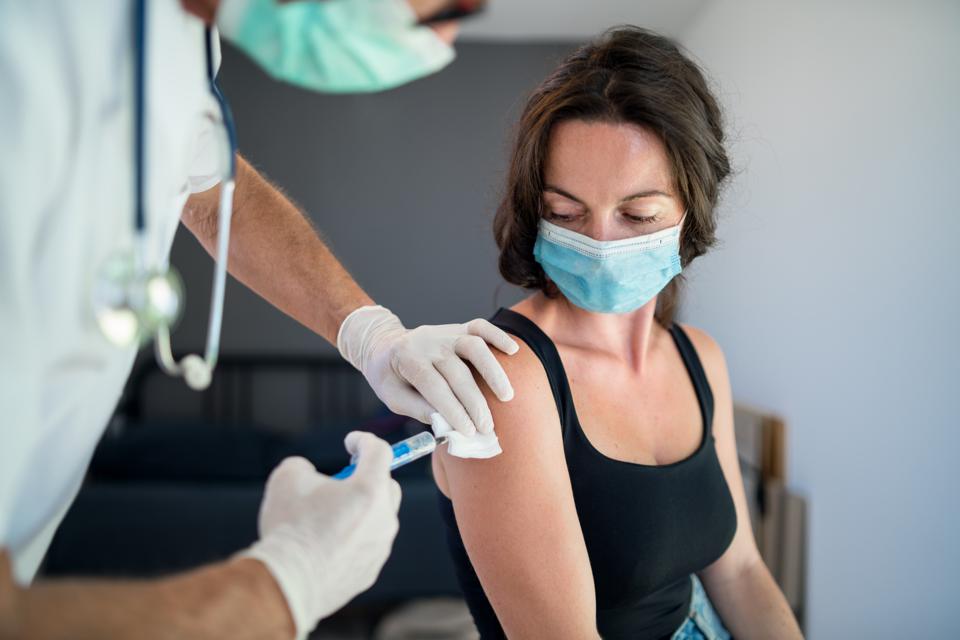Covid-19 Conspiracies: How Can We Deal With Misinformation?

getty
The rush to roll-out Covid-19 vaccines in the United States, United Kingdom and other countries has contributed to a new viral spread—that of false health information and malicious disinformation campaigns about the vaccines.
Misinformation regarding health matters is an age-old problem, but one that social media has exacerbated—with dangerous consequences. Any increase in traction for anti-vaccination activists inevitably leads to a decline in vaccination rates and an increase in preventable illnesses, as noted by the recent resurgence in measles outbreaks in the United States.
A recent nationally representative U.S. study found that the self-reported intent of getting a Covid vaccine declined from 74% in early April to 56% in early December 2020. This shift is alarming: Even highly effective vaccines won’t curb the pandemic if not enough people take them.
As the fight against Covid gets in full swing, with vaccination programs rolling out across the world, we must ensure society is also effectively immunized against misinformation, fake-news, and conspiracies by reinforcing facts and science. Here are three key steps proposed by SciBeh, a group of behavioral scientists who study decision making, in their COVID-19 Vaccine Communication Handbook:
1. Assess the source of the information.
Not all information is equal, useful, or credible. Relying on social media, such as Twitter and Facebook, for information about Covid is associated with reduced health-protective behaviors and an increased belief in conspiracy theories. By contrast, getting facts from reliable broadcast media and medical bodies is more likely to be associated with increased health-protective behaviors.
MORE FOR YOU
2. Guard against misinformation.
A technique known as “pre-bunking” makes people more resilient to manipulative argumentation. Pre-bunking (a play on “debunking”) involves warning people that they may be misled—for example, by noting that some social media users or groups have hidden agendas and therefore may misrepresent studies or cherry-pick information to support their cause. One pre-bunking measure is to warn people about “fake experts.” In December, a 30-minute video called “Ask the experts” featured a host of false and unsubstantiated claims, including a description of Covid as the “greatest hoax in history.” Informing people that the use of “fake experts” is common and has historical precedent (the tobacco industry used this tactic in the 1960s to downplay the harms of smoking) can help protect them from falling prey to malicious disinformation campaigns.
3. Correct misinformation.
Debunking misinformation that has already gained traction in society is more challenging than pre-bunking, but presenting factual alternatives to the misinformation can be effective. For example, “myth-busting” would involve repeating proven facts, such as “Getting vaccinated will help keep you from getting sick from COVID,” “The COVID vaccination is a safe way to help build protection if you do get ill,” and “The COVID vaccination is an important tool to help stop the pandemic.”
It is important to inoculate ourselves and others not just against the Covid pathogen, but also against viral anti-vaccine misinformation. The above steps can help, but we cannot do it alone. Facebook, Twitter, YouTube, and other social media platforms are the weapons of choice for spreaders of anti-vaccine misinformation. Strong governance, policies, and actions by those platforms are critical to ensure swift flagging or blocking of anti-vaccine disinformation. Some politicians have called for new laws to stop the spread of online anti-vaccine fake news and to impose financial and even criminal penalties against social media firms that do not remove false scare stories about vaccines.


